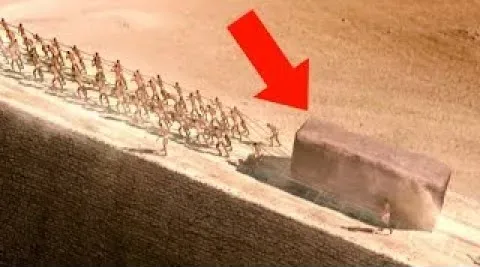The Great Pyramid of Giza is one of the most remarkable structures ever created, standing as a testament to human ingenuity and ancient wisdom. For centuries, historians and archaeologists have debated its construction methods and purpose. Yet, many suspect that the pyramid’s true purpose has been intentionally hidden from the public. Could the Great Pyramid be the oldest cover-up in history?

The Traditional Narrative: A Pharaoh’s Final Resting Place
Mainstream history suggests that the Great Pyramid was built about 4,500 years ago as a tomb for Pharaoh Khufu. Egyptologists believe that thousands of workers used primitive tools and immense manpower to cut, transport, and stack over 2.3 million limestone blocks, creating a structure that still stands today. However, despite decades of investigation, no mummies, inscriptions, or conclusive evidence confirming its use as a tomb have been found inside. This has led many to wonder if the pyramid’s true purpose has been deliberately concealed.
Advanced Technology in Ancient Egypt?
One of the most puzzling aspects of the Great Pyramid is its precise engineering. Massive limestone blocks, some weighing up to 80 tons, were placed with incredible accuracy—precision that even modern construction techniques struggle to achieve. Some researchers argue that the tools and methods available at the time shouldn’t have allowed for such an advanced structure.
Theories have emerged suggesting that the ancient Egyptians possessed lost knowledge or technology far beyond what we understand today. Others propose that an even older civilization, possibly predating the Egyptians, was responsible for its construction. If this were true, why would such information be suppressed?
Hidden Chambers and Secret Passages

Recent advances in scanning technology have revealed hidden chambers within the Great Pyramid. The most notable discovery is the “Big Void,” a massive empty space above the Grand Gallery. Despite ongoing research, Egyptian authorities have been secretive about what could be inside.
Some theorists speculate that these hidden chambers contain ancient texts, artifacts, or even evidence of extraterrestrial contact. If revealed, such findings could rewrite human history. Could this be why access to these areas remains restricted?
A Power Plant, Not a Tomb?
One of the most controversial theories is that the Great Pyramid was not built as a tomb but as a sophisticated power plant. Proponents of this hypothesis argue that the pyramid’s internal structure and materials—such as limestone, granite, and gold—were designed to harness and transmit energy.
Some suggest that the ancient Egyptians (or an even older civilization) understood advanced energy systems that have since been lost. If this theory holds any truth, it would drastically change our understanding of ancient technology and early civilizations. Could this be why mainstream scholars are reluctant to explore this possibility?
The Cover-Up: Who is Concealing the Truth?

Many believe that powerful institutions, governments, and academic organizations have deliberately suppressed evidence challenging the mainstream historical narrative. Some claim that revealing the truth about the Great Pyramid could disrupt religious beliefs, scientific theories, and even modern technological advancements.
Over the years, researchers, explorers, and alternative historians who have questioned the official story have faced opposition, censorship, and even ridicule. Is the world being kept in the dark about the true origins of this ancient wonder?
Conclusion: An Unsolved Enigma
The Great Pyramid of Giza remains one of the greatest mysteries in human history. Whether it was a tomb, a power plant, or something even more enigmatic, one thing is certain: much about it remains unknown. As technology advances and new discoveries are made, we may one day uncover the truth behind what could be history’s oldest cover-up.
What do you think? Is there more to the Great Pyramid than we’ve been led to believe?


